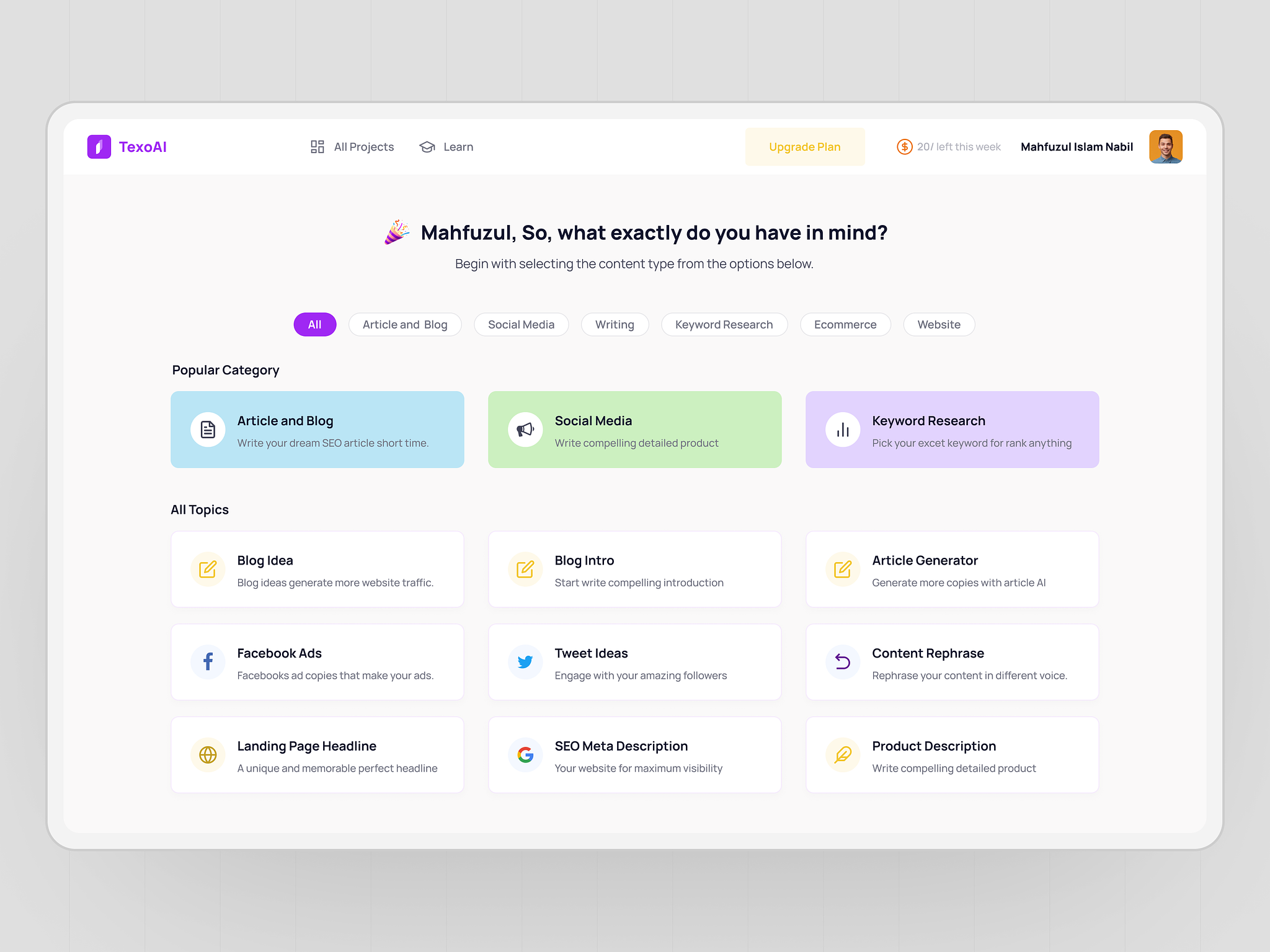Build AI-Powered Assistant Tool
An AI-Powered Assistant Tool for modern organizations enhances productivity by automating routine tasks, providing data-driven insights, and facilitating seamless communication.

AI Copy Writing Dashboard Design (image by Sajib Rahman)
Why Build AI-Powered Assistant Tool
An AI-Powered Assistant Tool for modern organizations enhances productivity by automating routine tasks, such as scheduling, data entry, and customer inquiries, allowing employees to focus on higher-value work. It provides data-driven insights through advanced analytics, helping organizations make informed decisions and optimize operations. Additionally, it facilitates seamless communication across teams and departments by integrating with various collaboration tools, enabling real-time information sharing and efficient workflow management. This tool adapts to user preferences and learns from interactions, continually improving its effectiveness and contributing to a more efficient and dynamic workplace.
Increased Employee Productivity & Efficiency
AI assistants can automate repetitive tasks such as scheduling meetings, booking travel, sending follow-up emails, and data entry. This frees up valuable employee time for more strategic and creative work, boosting overall productivity and efficiency
Improved Knowledge Management & Information Retrieval
AI assistants can access and process vast amounts of information within the organization. They can answer employee questions, locate relevant documents, and provide summaries of complex topics, empowering employees with the knowledge they need to perform their jobs effectively.
Enhanced Customer Service & Support
AI assistants can be deployed on customer-facing platforms like websites or chatbots to answer frequently asked questions, troubleshoot basic issues, and direct customers to the appropriate resources. This improves customer experience by offering 24/7 support and faster resolution times.
Personalized Work Experiences
AI assistants can learn user preferences and work styles over time. They can then proactively suggest tasks, recommend relevant information, and personalize the user experience, making work more efficient and streamlined.
Data-Driven Decision Making
AI assistants can analyze user data and identify patterns or trends. This data can be valuable for managers to gain insights into employee behavior, workflow bottlenecks, or customer service needs, empowering data-driven decision making for process improvement.
Reduced Administrative Costs
Automating tasks through AI assistants reduces the need for additional administrative staff. This translates to cost savings and allows for better allocation of human resources towards higher-value activities.
Improved Communication & Collaboration
AI assistants can facilitate communication by transcribing meetings, summarizing conversations, and translating languages. This can streamline collaboration within teams and across departments, especially in a globalized workforce.
Enhanced Accessibility
AI assistants can provide real-time translation and offer assistance in various languages, catering to diverse workforces and ensuring inclusivity for all employees.
Reduced Errors & Improved Accuracy
Automating tasks minimizes human error associated with manual data entry and repetitive processes. This improves accuracy and data integrity within the organization.
